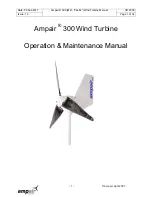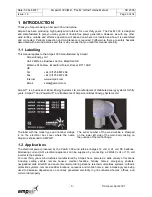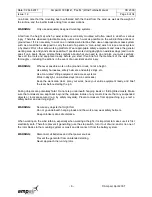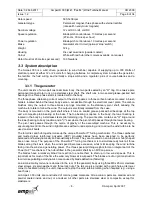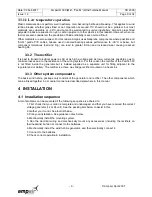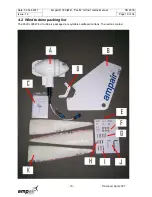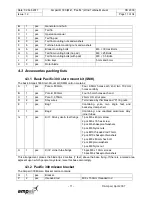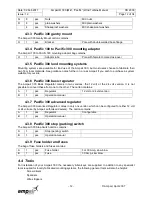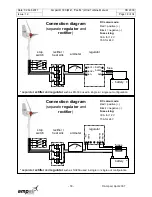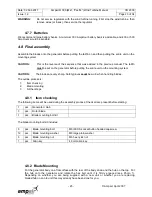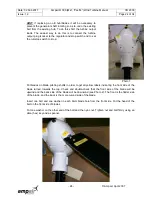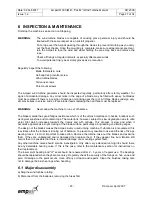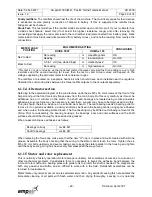
Date: 02 Feb 2011
Ampair ® 300 (Mk1, “Pacific”) Wind Turbine Manual
CD 2300
Issue: 1.2
Page 14 of 34
- 14 -
© Ampair, April 2007
Mast:
of steel tube (water pipe or scaffold tube), alloy
tube or wood (telegraph pole). If the guys are unsuitable
(grazing cattle or small children) then use a telegraph
pole one third buried, or a lattice tower as an expensive
alternative.
Guys:
Usually galvanised steel wire protected by
plastic sheath and fitted with end thimbles. Don‟t use a
material that will stretch or deteriorate. Three equally
spaced guys (120°) will assist raising and lowering the
assembled mast. A high mast will require intermediary
guying: the top guys hold the mast upright, and the lower
guys prevent it from buckling.
The top fixing point for the guys should allow for minimum
overhang of the wind turbine generator, i.e. be only a
short distance below the wind turbine blade tips. This
prevents the top section of the mast from swaying too much.
Tensioners:
These are the simple and easiest method of tensioning guys, but adjustment must be
uniform, since it is the guys that resist the thrust of the wind turbine. Do not over tension
–
a guy should be
snugly taut, but not drum tight.
Ground anchors:
These should be suitable eyebolts fixed
in the ground and in line with the guys. Anchors in soft earth may
require concrete
blocks or „dead men‟. G
ravel or clay soils require
“auger” type anchors
(see inset picture) and rocky ground may
need drilling and expanding rock anchors. Only the eye should be
visible above ground. Avoid waterlogged soils which have poor
holding properties. Install anchor below the frost level or
otherwise „frost heave‟ will eject them.
Base:
This is to carry the weight of the generator and mast
only. Fixing again depends on the ground state but metal pegs
driven into soil are often sufficient. A lattice tower would need a
concrete base with expansion bolt fixings (
„
rawlbolts
‟
). It is often
convenient to make a pivot arrangement for the base in-line with
one guy anchor to aid raising and lowering.
Lightning:
Directly earth all metalwork. Bury output cables (minimum ½ metre depth) between mast
and battery position for better protection than suspending in air. Either run cabling through plastic conduit
or use a type specified for burying by local building or electrical codes.
4.5.3 Siting boat based units
There are four basic alternatives in the confined quarters of most small boats:
a) On a tall stayed pole on the stern of a boat (either the basic or the de luxe stern mount kit).
b) On a bracket on the mizzen mast of a yacht (mizzen bracket).
c) On a custom made welded „pushpit‟ st
ructure, "A" frame, davit gantry etc. (gantry mount).
d) At the main or mizzen masthead of a yacht.

